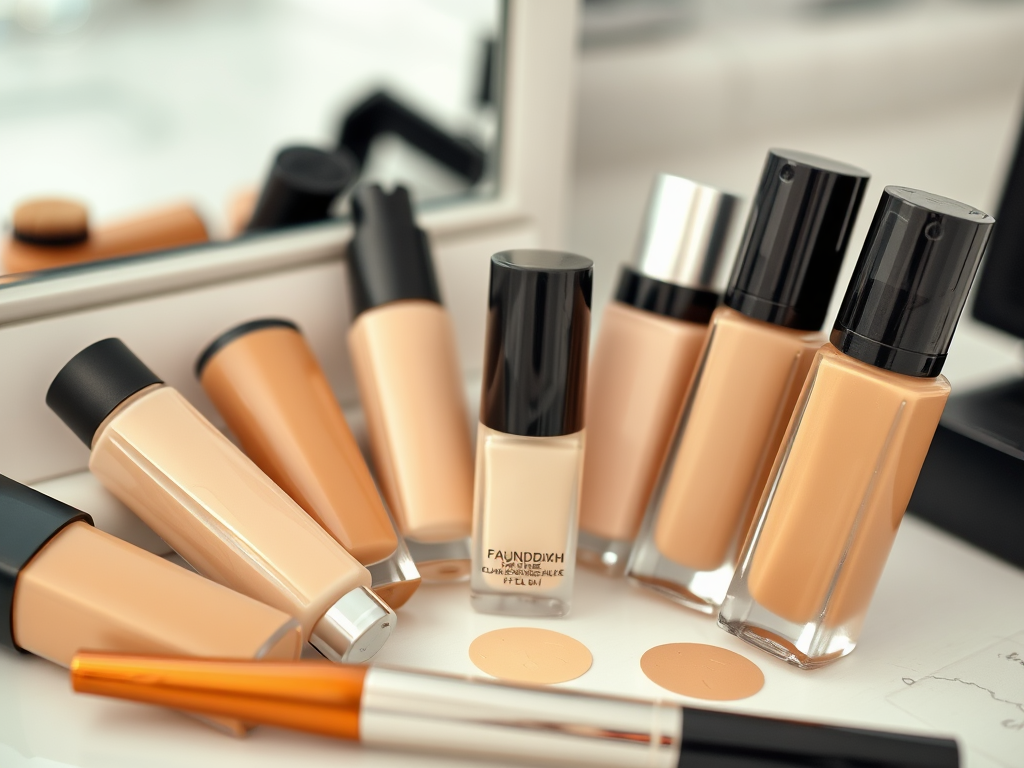Finding the perfect foundation can be a daunting task, especially when attempting to match it to your unique skin tone. With countless options available, it’s easy to feel overwhelmed. However, a flawless makeup application begins with a foundation that not only matches your skin tone but also complements your undertone. Understanding these elements is the crucial first step in your beauty journey. In this article, we will explore expert tips and practical approaches to selecting the right foundation for your skin tone, ensuring that you achieve a radiant, seamless finish.
Choosing the right foundation goes beyond simply selecting a shade that looks similar to your skin. It involves a deep understanding of your skin’s characteristics. Knowing your skin type, undertones, and the occasion for which you’re applying makeup can significantly enhance your ability to choose wisely. This guide will equip you with the necessary tools to test and apply foundation like a professional. Let’s dive into the essential aspects to help you ace your foundation game!
Understanding Skin Undertones

To truly match your foundation, it’s crucial to understand your skin’s undertones. These undertones serve as the subtle hues underneath your skin’s surface, and they can dramatically influence how different colors appear on you. Understanding this can lead to more flattering and natural-looking makeup. There are primarily three categories of skin undertones: cool, warm, and neutral.
- Cool Undertones: Characterized by hints of pink, red, or blue in the skin. Look for a rosy glow in your complexion.
- Warm Undertones: Feature golden, yellow, or peach hues. If you tan easily, you might fall into this category.
- Neutral Undertones: A balance of both cool and warm tones, often with an olive tint. You might find that both silver and gold jewelry suit you.
Choosing the Right Foundation Formula

Different skin types require different foundation formulas for the best application. It’s not just about color; it’s also about texture and finish. Your environmental conditions, skin type, and personal preferences play a vital role in selecting the appropriate product. For instance, oily skin may necessitate a different formula compared to dry or combination skin.
- Liquid Foundations: Versatile and suitable for most skin types. They can offer a range of coverage options.
- Powder Foundations: Ideal for oily skin or for a quick matte finish, providing a more breathable option.
- Cream or Stick Foundations: Great for dry skin, typically offering more coverage and hydration.
Testing Foundation Shades
Finding the perfect shade involves more than just guessing. The swatch method isn’t enough; there are additional strategies you should employ for a precise match. Many brands provide tester options, allowing you to try before you buy. It’s also essential to consider factors like lighting and the influence of skin care products you’re currently using.
| Foundation Type | Best For | Finish |
|---|---|---|
| Liquid | All skin types | Buildable, natural |
| Powder | Oily skin | Matte |
| Cream/Stick | Dry skin | Hydrating, full coverage |
| Tinted Moisturizer | Normal/Dry skin | Sheer, dewy |
Application Techniques for a Flawless Finish
Once you’ve found the right shade, technique matters immensely. How you apply your foundation can dramatically alter the final look. Several tools and techniques can help ensure even distribution, blending, and longevity of your base makeup. Experimenting with different methods will help you find what works best for your skin type and personal style.
Tools for Application
- Makeup Brushes: Offer full coverage and a polished finish. Ideal for liquid and cream foundations.
- Beauty Sponges: Perfect for achieving a natural, airbrushed effect. It’s often used when applying liquid formulas.
- Fingers: Useful for blending cream foundations and adding warmth from your hands.
Step-by-Step Application
Here’s a straightforward method you can follow for perfect application:
- Prep Your Skin: Thoroughly cleanse, moisturize, and prime your skin to promote smooth application.
- Apply Foundation: Start from the center of the face and blend outwards to create an even canvas.
- Set with Powder: Lightly dust with a translucent powder to secure the foundation and reduce shine throughout the day.
Conclusion
Matching your foundation to your skin tone is essential for a flawless makeup application. Understanding your undertones, selecting the right formula, and mastering your application techniques are all pivotal steps toward enhancing your natural beauty. Don’t forget that practice makes perfect, and confidence is key. With these tips at your fingertips, you are well on your way to achieving a seamless look.
Frequently Asked Questions
- How can I identify my skin undertone? You can identify your skin undertone by checking the color of your veins on your wrist. Blue or purple veins typically indicate cool undertones, while green or olive veins suggest warm undertones.
- What is the best way to test a foundation shade? Swatch the foundation on your jawline and blend it out to see how well it matches your skin tone in natural light.
- Can I mix foundations for a better match? Yes, mixing two different foundation shades can help you achieve the perfect match for your skin tone.
- What foundation type is best for oily skin? A powder foundation or a matte liquid foundation is often best for oily skin, as it helps control excess oil and shine.
- How often should I replace my foundation? It’s advisable to replace your foundation every 6-12 months, depending on usage and formula stability.
